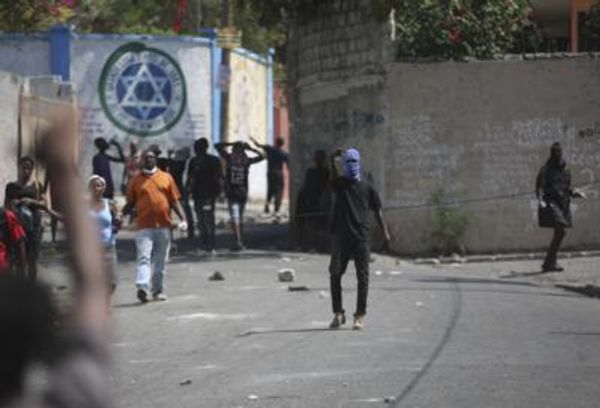
For Murrawah Johnson, the impacts of the climate crisis and the destruction of land to mine the fossil fuels that drive it are more than simple questions of atmospheric physics or environmental harm.
“What colonisation hasn’t already done, climate change will do in terms of finalising the assimilation process for First Nations people,” the 29-year-old Wirdi woman from Queensland says.
“[It is] totally destroying our ability to maintain a cultural identity, cultural existence and to be able to pass that on.”
Johnson is one of seven global winners of the prestigious Goldman prize for environmental activism – described as the Nobel for the environment movement - announced at a ceremony in San Francisco.
She’s honoured, she says, to be in the company of campaigners who waged many of Australia’s most influential environmental battles, from blocking sandmining on K’gari to fighting uranium mining in Kakadu and saving Tasmania’s Franklin River from damming – a campaign that led to the formation of the Australian Greens.
Johnson is recognised for her role as a co-director of Youth Verdict – a group that won a landmark legal case in Queensland to block a major coalmine backed by the mining magnate and politician Clive Palmer.
Palmer’s Waratah Coal planned to dig up a nature refuge to mine and sell about 40m tonnes of coal a year from the Galilee basin.
Youth Verdict secured the first “on country” hearing in Queensland’s land court to hear evidence from Indigenous people.
But the case was also the first to test the state’s new Human Rights Act, successfully arguing that the emissions from burning the coal would limit the rights of First Nations people.
Waratah Coal withdrew its appeal last February and, two months later, the Queensland government blocked the mine.
But Johnson, a mother of one with a second child on the way, had already been campaigning for the rights of her people against the climate crisis and fossil fuels for almost a decade.
Johnson was a youth spokesperson for the Wangan and Jagalingou family council that had fought unsuccessfully against the development of one of Australia’s most controversial resource projects, Adani’s Carmichael coalmine.
She remembers a community meeting in front of Adani’s lawyers and hundreds of Indigenous people in 2014 when she was asked to speak to represent young people after those gathered were handed an “information package” about the project.
“I was 19 at the time and I said, ‘Where’s the environmental impact statement?’ – is there anything about the environmental impacts,” she says.
“You want us to make a decision to essentially give our consent to this project but you’re withholding the facts of the impacts to our country.”
Johnson has always been surrounded by strong Indigenous advocates in her family.
The fight to avert the climate crisis, she says, is a clear continuation of Indigenous Australians’ battle for recognition and the ownership of their land and retention of their culture, stories and totems.
“This is really about course-correcting the injustice that’s been done to us starting from the declaration of terra nullius and understanding that there’s still a way to be a productive and economically viable society that doesn’t depend on destroying country, dispossessing people of their land and their culture – homogenising people and putting the rest of the world at threat.”
As well as the direct physical impacts of resources projects – such as mines damaging sacred sites or sea level rise inundating burial grounds – Johnson says the effects of climate change on the fabric of Indigenous beliefs can be profound.
Johnson is Wirdi woman from the Birri Gubba nation and her totem animal is the goanna.
“Other groups have other totems that are more vulnerable to climate change,” she says.
“We’ve already taken a huge loss to biodiversity due to colonialism, through the pastoral industry especially. Hopefully the goanna can be adaptive, but that does not necessarily apply to [other totems like] crocodiles or turtles.
“What happens when a whole species is disappeared from climate change? How do our people then identify? Because it is how they relate to everyone around them. How do you find your place or navigate the world.
“When I say our cultural survival is on the line, that’s what I’m talking about.”
Fighting against the might and influence of the fossil fuel industry is hard enough. Johnson has taken this on while also carrying the fight of First Nations people already dispossessed of their land, and the legacy of trauma that comes with it.
She wants Youth Verdict to become a vehicle for First Nations people to assert their rights and push for acknowledgment whether that is in legal courts, or in the courts of public opinion.
“It can be a lonely place and you find yourself asking what’s it all for. But I have to remind myself that sometimes the work needs to be done … because it’s just the right thing to do.”







